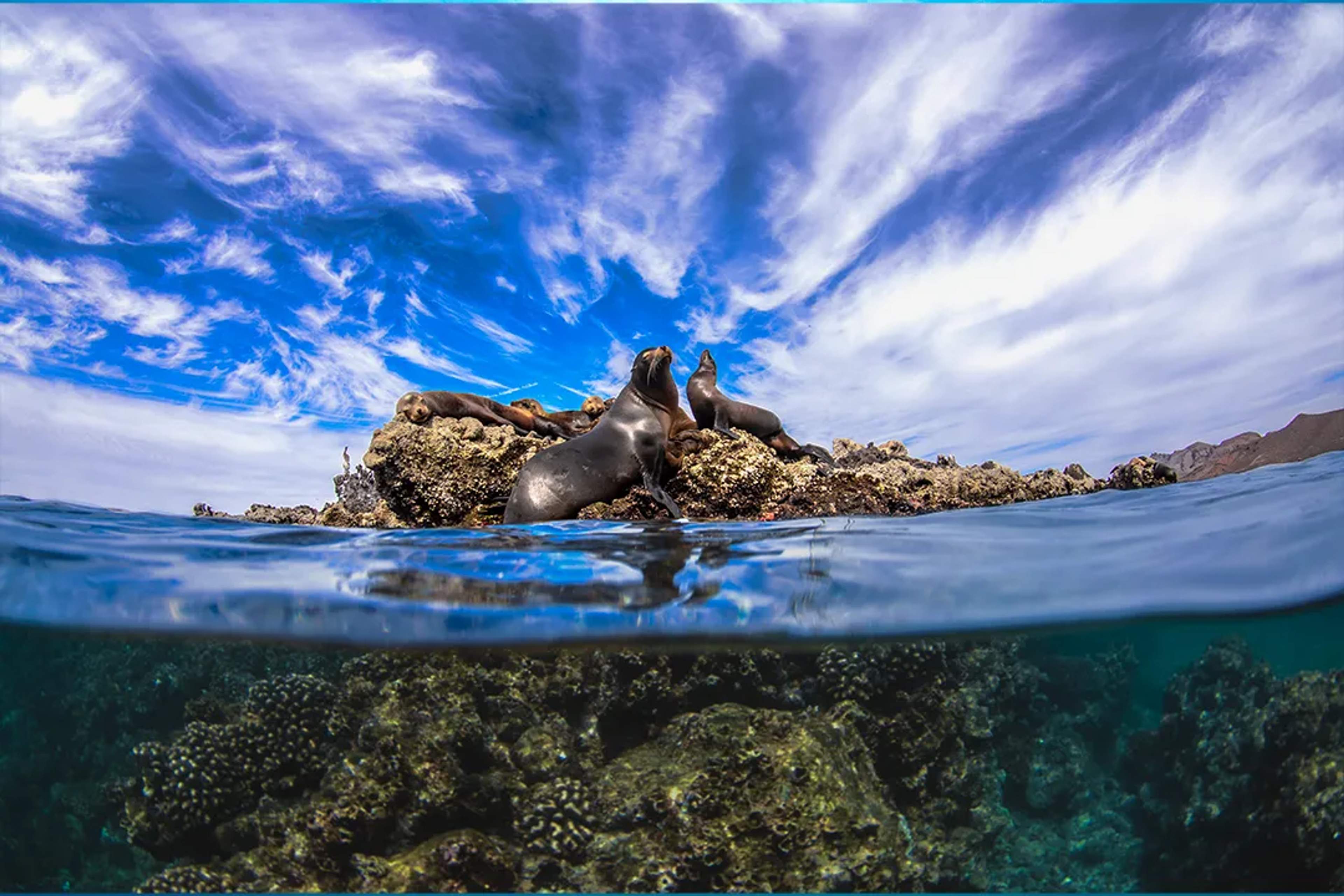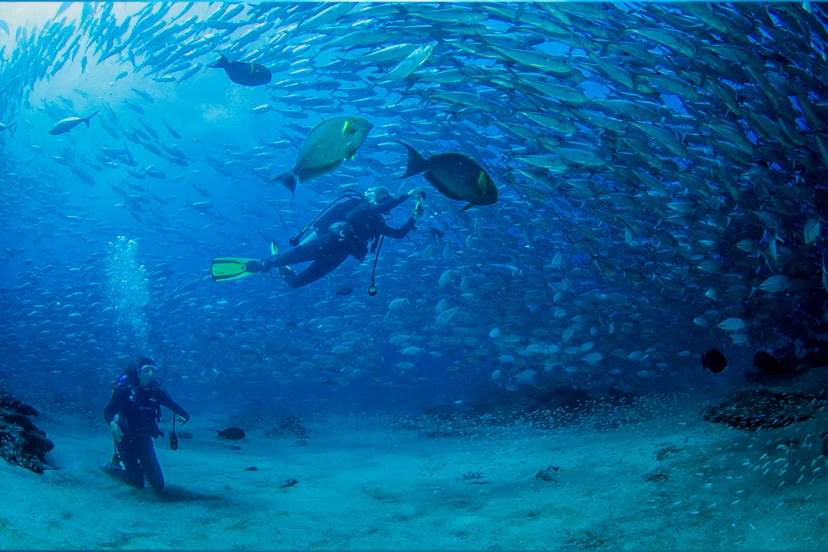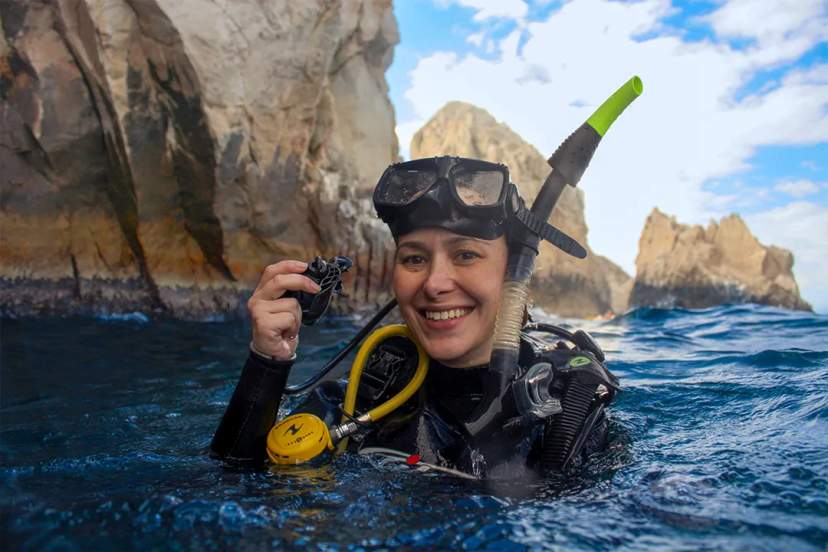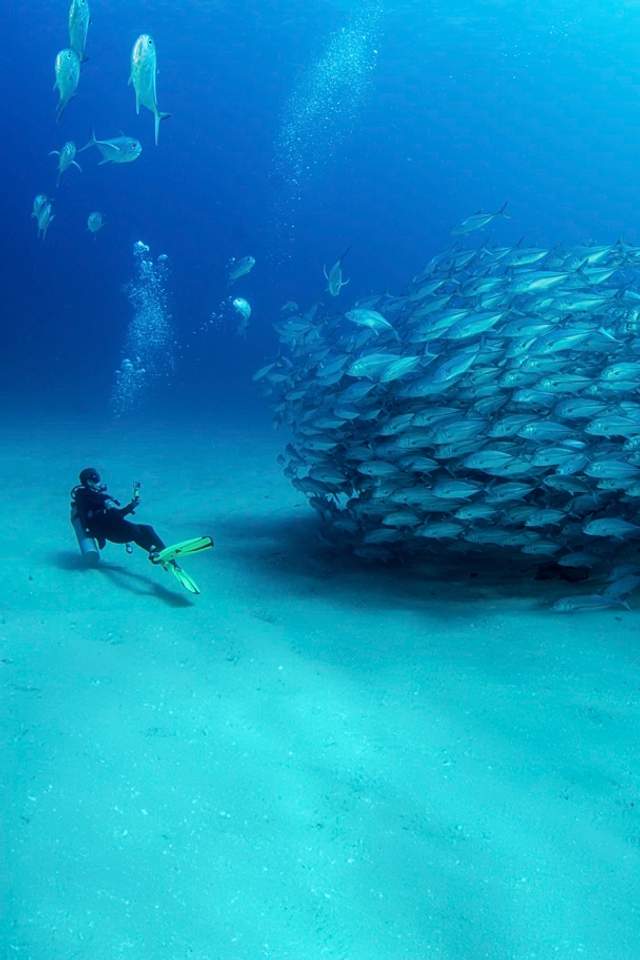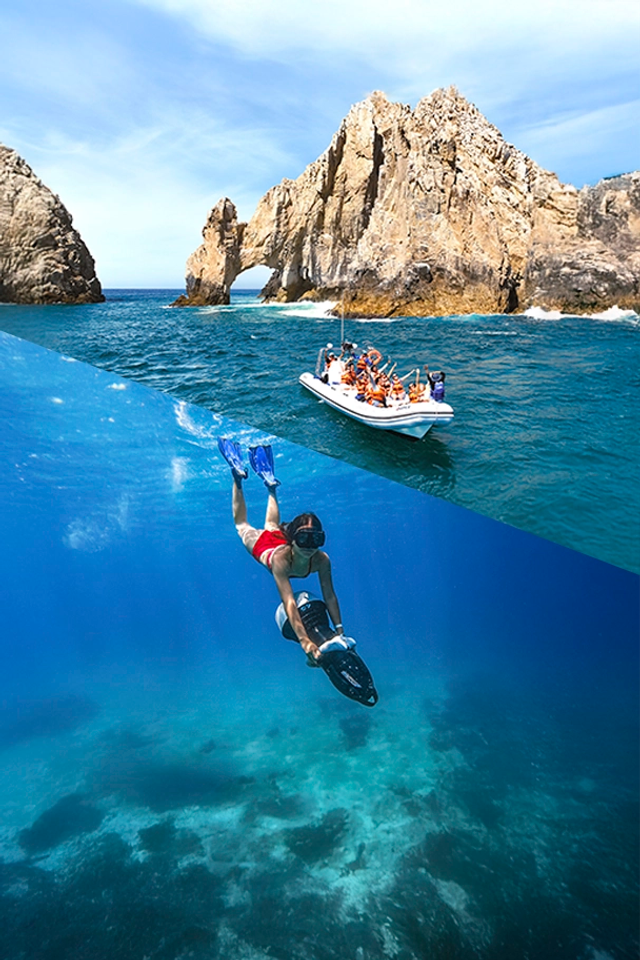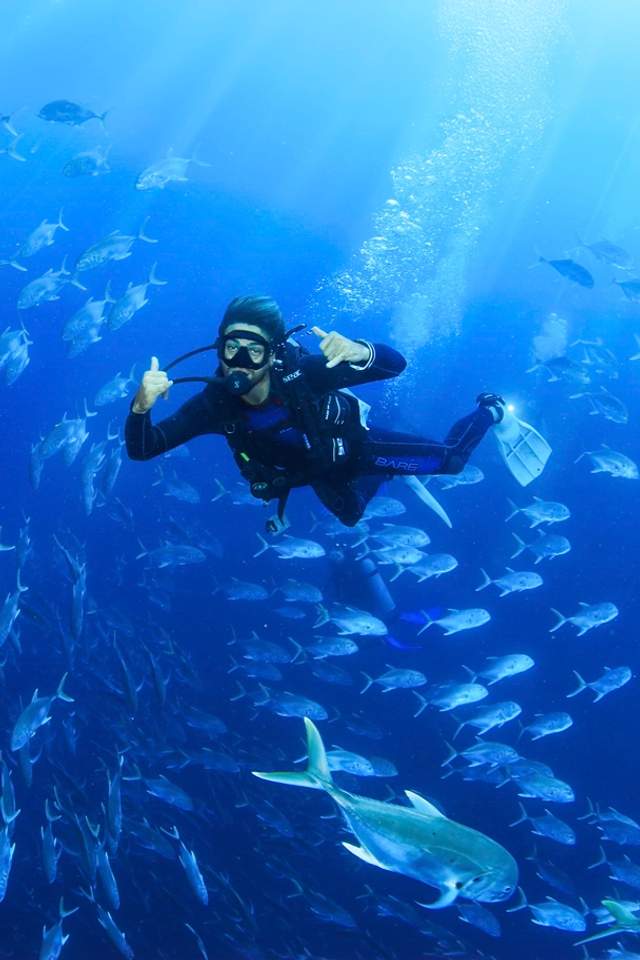Tucked along the radiant shores of Baja California Sur, Cabo Pulmo National Park is a rare sanctuary for adventurers and nature lovers. Situated within the vibrant Sea of Cortez, often called “The World’s Aquarium”, this marine park is home to one of the most remarkable underwater ecosystems on the planet.
Picture yourself diving into crystal-clear waters alive with marine life, snorkeling above ancient coral reefs, and experiencing a conservation success story that has revived one of the ocean’s most vital habitats.
This guide invites you to discover the magic of Cabo Pulmo, its thriving underwater world, its deeply rooted community, and the sustainable practices that have turned it into one of Mexico’s most celebrated marine reserves.
What is Cabo Pulmo National Park?
Located approximately 60 miles north of Cabo San Lucas on the east coast of Mexico’s Baja California Peninsula, Cabo Pulmo National Park is a beacon of marine biodiversity and a testament to successful conservation efforts in a marine reserve in Mexico.

Established in 1995, this protected area spans over 71 square kilometers (27.46 square miles) of terrestrial and marine habitats, encompassing the Cabo Pulmo Reef, one of the oldest and most vibrant coral reefs in North America, estimated to be around 20,000 years old.
Recognized as a UNESCO World Heritage Site in 2005 for its outstanding marine ecosystem, Cabo Pulmo's UNESCO listing underscores its global value as a conservation treasure. The park is a unique fusion of geographical wonders where the Sea of Cortez meets the Pacific Ocean.
Its reefs are renowned for their "fingers" of coral atop rock formations that run parallel to the coast, creating an underwater labyrinth teeming with life. This intricate reef structure provides a haven for a staggering array of marine species, from microscopic plankton to majestic whale sharks.
Cabo Pulmo serves as a critical nursery for fish larvae, supporting not only local but also regional marine populations throughout the Gulf of California. The area is a living laboratory for scientists and a sanctuary for endangered species, showcasing the resilience of nature when given the chance to heal. Visitors to Cabo Pulmo are invited to dive into this underwater paradise, experiencing firsthand the awe-inspiring abundance of marine life and the thriving ecosystems that make this park a jewel of Mexico's natural heritage.
How to Get There & Travel Tips
Reaching Cabo Pulmo is part of the experience, a scenic journey through the dramatic desert and coastline of Baja California Sur. Located roughly two hours from both Cabo San Lucas and San José del Cabo, the drive takes you along Highway 1, winding past cactus-studded hills and panoramic sea views.
Self-Drive Instructions
From either Cabo San Lucas or San José del Cabo, head north on Highway 1 toward La Ribera. Watch for signs to Cabo Pulmo and turn right onto the paved access road.
Prefer a Stress-Free Option?
Skip the navigation and enjoy the ride with Cabo Adventures’ Cabo Pulmo Snorkeling Adventure. This guided experience includes round-trip transportation, certified naturalist guides, and all the necessary gear, making it an easy and eco-conscious way to explore one of Mexico’s most biodiverse marine parks.
Packing Tips
Be prepared for sun and sea. Essentials include: reef-safe sunscreen, a wide-brimmed hat, polarized sunglasses, and swimwear. Don’t forget a reusable water bottle to stay hydrated and help reduce plastic waste.
Local Logistics
Cabo Pulmo is charmingly remote. Many local businesses only accept cash, and there are no ATMs in the immediate area, so plan accordingly. Lodging ranges from rustic eco-cabins to boutique seaside inns, but space is limited, especially during peak seasons—booking in advance is essential. Cell service is limited, and Wi-Fi is often slow or unavailable, creating a perfect opportunity to unplug and reconnect with nature.
By planning ahead, or choosing a guided tour, you’ll be well prepared to enjoy everything Cabo Pulmo has to offer, from underwater wonders to quiet coastal serenity.
A Conservation Success Story
The establishment of Cabo Pulmo National Park is a testament to the power of community-driven conservation. In the 1980s, as marine life dwindled due to overfishing and habitat destruction, the local residents of Cabo Pulmo realized that their way of life was unsustainable.
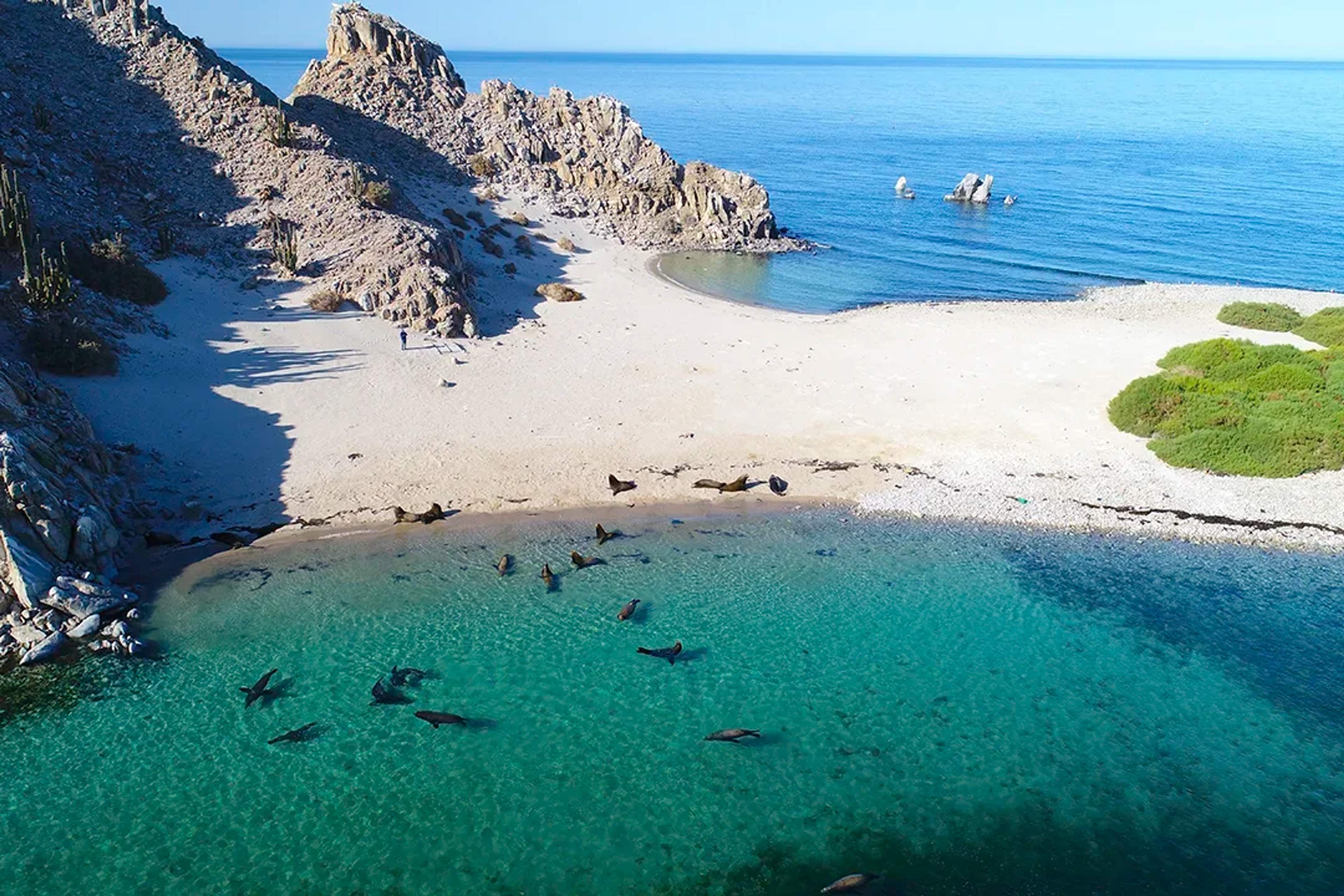
Collaborating with academics from the Autonomous University of Baja California Sur, they learned about the critical importance of their reef ecosystem. Biologists explained how the reef provided essential environmental services and the damage caused by activities like anchoring and heavy fishing.
Despite initial resistance, after all, fishing was their livelihood—the community embarked on a remarkable journey of transformation. In 1995, they successfully petitioned the Mexican government to designate Cabo Pulmo as a protected National Marine Park. The community agreed to cease commercial fishing and adopted a no-take zone policy, allowing the reef and its inhabitants to recover.
The impact of this conservation effort has been extraordinary. Studies have shown a 460% increase in total fish biomass within the park—a recovery unparalleled anywhere else in the world. The return of Cabo Pulmo's marine life includes not only abundant fish populations but also the resurgence of large predators like sharks and groupers, essential for a healthy marine ecosystem.
Cabo Pulmo’s Underwater World
Beneath the azure surface of the Sea of Cortez lies a thriving marine sanctuary that has earned Cabo Pulmo its place among the world's top diving and snorkeling destinations. This extraordinary reef system, protected within Cabo Pulmo National Park, is a living conservation success story—and a must-visit for underwater explorers.
What You’ll See While Diving or Snorkeling
Whether you're floating just above the reef or diving deeper among its ridges, Cabo Pulmo offers unforgettable marine encounters. Expect to see:
Colorful Reef Fish
- Angelfish
- Butterflyfish
- Parrotfish
- Sergeant majors
- Damselfish
Larger Species & Predators
- Groupers
- Jacks
- Bull sharks
- Hammerhead sharks
- Tiger sharks
Seasonal Visitors & Charismatic Creatures
- Manta rays (year-round)
- Whale sharks (typically from October to February)
- Sea turtles
- Playful sea lions (often spotted near rocky outcrops)
Experience It Responsibly
Whether you're gliding above the reef on a snorkel tour or exploring its deeper canyons on a certified dive, the experience is both humbling and awe-inspiring. For a safe, educational, and eco-friendly adventure, consider joining the Cabo Pulmo Snorkeling Adventure (https://www.cabo-adventures.com/en/tour/cabo-pulmo-snorkel-expedition/), with Cabo Adventures, offering guided access to this marine paradise with minimal environmental impact.
Snorkeling in Cabo Pulmo
Snorkeling in Cabo Pulmo is like entering a living aquarium, where the sheer abundance and diversity of marine life leave even seasoned travelers in awe. The crystal-clear waters offer exceptional visibility, allowing snorkelers to fully appreciate the vibrant colors and movements of the reef's inhabitants.

As you float above the coral formations, you'll be surrounded by schools of tropical fish, including sergeant majors, snappers, and the mesmerizing angelfish with their vivid hues.
Seasonality plays a role in the marine encounters you might have. The best time to visit Cabo Pulmo for snorkeling often aligns with the warmer months when water temperatures are comfortable, and marine life is particularly active. However, each season brings its own unique sights, from migrating whale sharks in late summer to humpback whales gracing the waters in winter.
Respect for the reef and its inhabitants is paramount. Snorkelers are encouraged to practice good etiquette, such as maintaining a safe distance from marine life, not touching the corals, and using reef-safe sunscreen to minimize environmental impact. Joining a guided tour, like the snorkeling adventure, ensures that you experience the best snorkeling spots while adhering to conservation principles.
Diving in Cabo Pulmo
For those seeking to delve deeper into the ocean's mysteries, diving in Cabo Pulmo offers an unparalleled experience. The park's underwater topography is as diverse as its marine life, featuring canyons, walls, and sandy plains that create a dynamic landscape for exploration.
To fully immerse yourself in this underwater wonderland, consider joining an exceptional diving in Cabo Pulmo excursion with experienced guides. Imagine descending into swirls of silver as massive schools of jacks encircle you, or witnessing the awe-inspiring sight of a bull shark gliding effortlessly through the water. The chance to spot whale sharks, the gentle giants of the sea, adds an extra layer of excitement, especially during their peak season from late summer to early fall.
Unique dive sites like "El Bajo," known for its pinnacles and pelagic species, or "Los Cantiles," where steep walls host an array of corals and sponges, showcase the incredible biodiversity of Cabo Pulmo's underwater world. Visibility is generally excellent, and the warm waters make for comfortable diving conditions year-round.
Sustainable Travel and Community Impact
The residents of Cabo Pulmo have played a pivotal role in the area's conservation efforts, transforming from a fishing-dependent village to guardians of a thriving marine sanctuary.
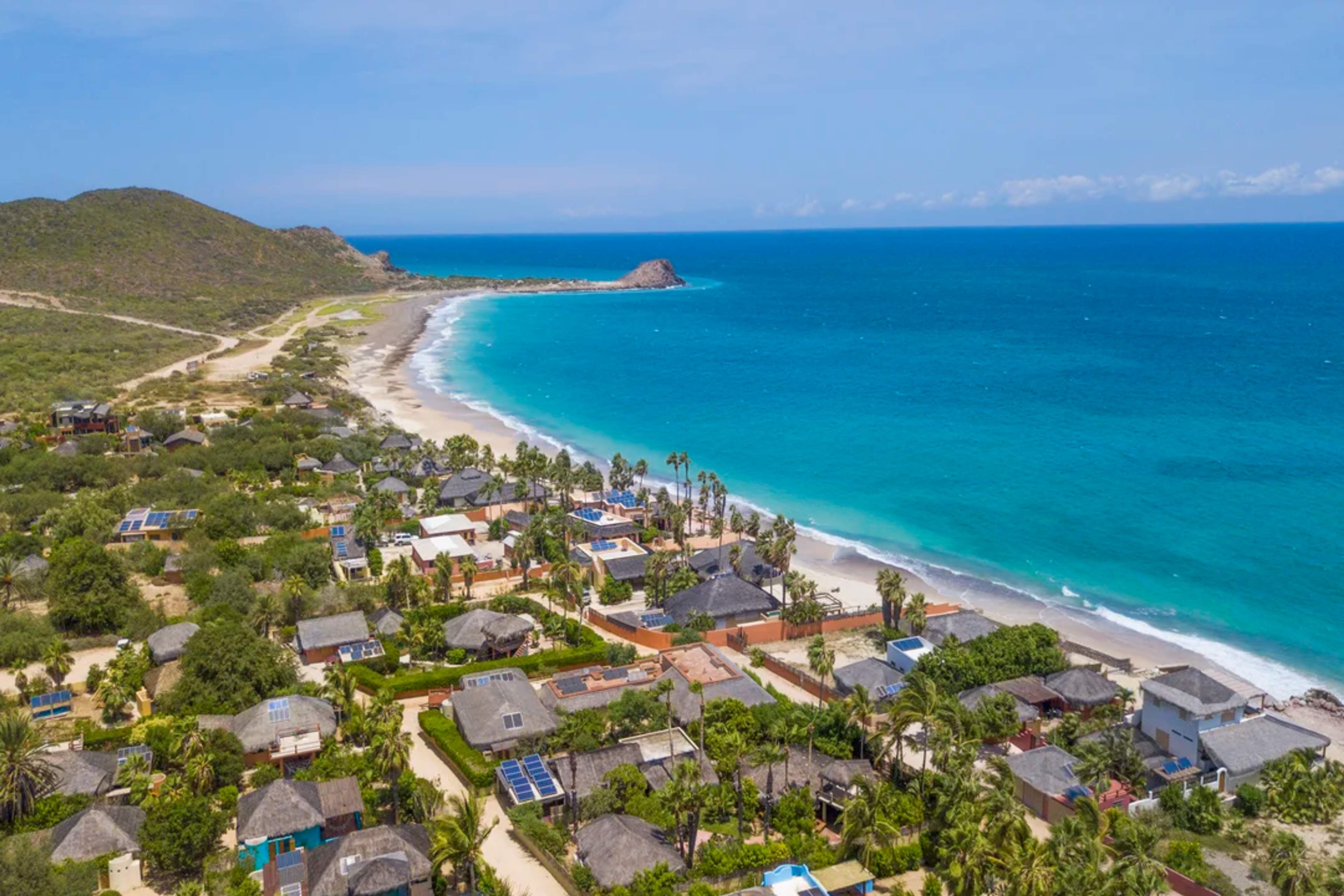
The community operates under a system of local guides and eco-conscious businesses, ensuring that tourism supports conservation efforts rather than detracting from them. By employing local guides, visitors gain authentic insights into the park's ecosystems while directly contributing to the livelihoods of those who have dedicated themselves to protecting it. This approach fosters a deep connection between visitors and the community and supports ongoing community conservation efforts, enhancing the overall experience.
Strict conservation rules are in place to maintain the delicate balance of the ecosystem. Activities like snorkeling and diving are conducted with minimal impact on the environment, following guidelines that prevent damage to the reef and disturbance to marine life.
For those wishing to extend their stay, eco-accommodations provide sustainable lodging options that align with the park's ethos. These establishments often utilize renewable energy sources, water conservation techniques, and low-impact designs that blend seamlessly with the natural surroundings. Embracing ecotourism activities not only enriches your travel experience but also supports the ongoing preservation of this incredible destination.
By choosing to travel sustainably, visitors become part of the Cabo Pulmo conservation story, ensuring that this marine paradise continues to flourish for generations to come. It's a harmonious blend of adventure and mindfulness, where every action contributes to the well-being of the environment and the community that calls it home.
When to Visit Cabo Pulmo
Understanding the best time to visit Cabo Pulmo can enhance your experience, aligning your trip with optimal weather conditions and marine life activity. The park offers unique sights throughout the year, but certain periods stand out for specific wildlife encounters and experiences.
From May to October, warmer water temperatures (ranging from 75°F to 85°F) make it ideal for snorkeling and diving. During these months, the visibility is excellent, and marine life is particularly active.
The winter months, from November to March, bring cooler waters (around 65°F to 75°F) but offer the incredible spectacle of humpback whales migrating through the region. It's also a great time to enjoy milder weather on land and fewer crowds.
When planning your visit, consider the lunar cycles, as tides can affect visibility and marine activity. Early mornings often provide the calmest seas and the best conditions for snorkeling and diving.
Ultimately, the best time to visit Cabo Pulmo depends on your interests and desired experiences. Each season offers its own magic, ensuring that whenever you choose to go, you'll be immersed in the natural beauty and wonder that defines this extraordinary destination.
Final Thoughts
As you explore the vibrant reefs, swim alongside an astonishing diversity of marine life, and witness the harmony between the local community and their environment, you'll find inspiration and a renewed appreciation for our planet's ecosystems.
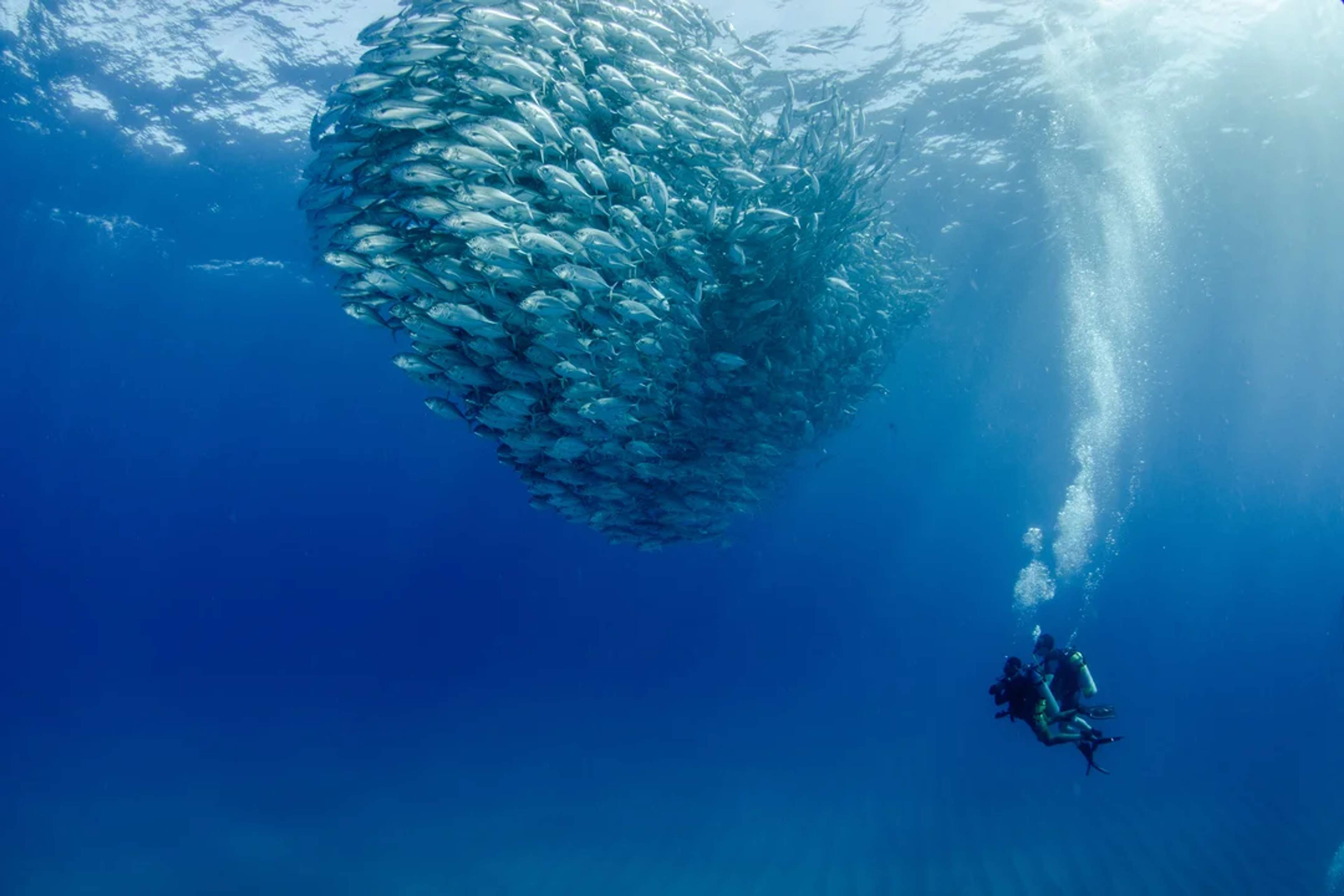
We invite you to become part of this incredible story. By visiting Cabo Pulmo responsibly, you contribute to the ongoing preservation of this marine paradise. For those seeking to delve into the heart of this underwater wonderland, consider booking a snorkeling or diving adventure with experienced and eco-conscious operators like Cabo Adventures. Together, we can ensure that the beauty and vitality of Cabo Pulmo continue to thrive, offering unforgettable experiences for generations to come.
Embark on this journey not just as a traveler but as a steward of the environment, cherishing the delicate balance of nature and the extraordinary efforts that have made Cabo Pulmo a shining example of marine conservation success.
